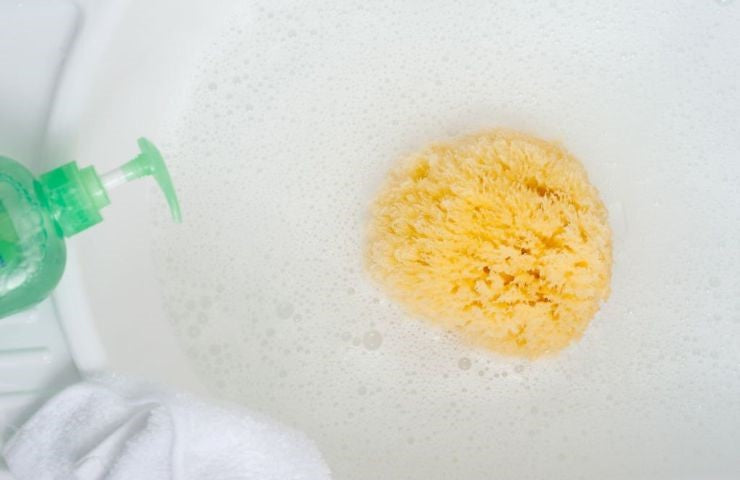My love for sea sponges has only grown over the years. They're a sustainable, versatile, and eco-friendly option that I've come to appreciate for their gentle exfoliation properties and unique texture. However, to truly appreciate and prolong the life of a sea sponge, proper care is absolutely essential. In this article, I'll share my personal experiences, tips, and tricks for sea sponge care, including cleaning, maintaining, and preserving these lovely natural sponges.
The Basics: Washing and Prolonging Sea Sponge Lifespan

Whether you're using your sea sponge for light tasks like washing your face with facial sponge or heavy-duty cleaning like scrubbing the bathroom floor or bathing with a sea sponge. It's important to keep your sponge clean and dry between uses. This not only prolongs the sponge's lifespan but also ensures it can perform at its best. I've found that giving my sponge a quick "wash" after light tasks and a thorough "bath" after more intense cleaning jobs works wonders.
For a simple wash, I like to rinse the sponge well in water, squeezing and turning it to remove dirt and grime. Then I work in some soapnut liquid, vinegar water, or another gentle cleaning solution, ensuring it penetrates the sponge. After a final rinse in warm water and a squeeze to remove excess water, I let my sponge air dry.
If your sea sponge has ragged edges or loose pieces, simply trim them with scissors to keep it smooth and extend its life.
When Sponge Need Deep Cleansing

Isn't it amazing that sea sponges can naturally resist bacteria growth? But if we want them to stay in great condition and last longer, we've got to clean and dry them after each use. It's important to remember that even though they have antimicrobial properties, sea sponges can still hold bacteria, just like regular plastic loofahs or scrubbers.
How to Clean Your Sea Sponge: A Step-by-Step Process
- Gently squeeze the sponge in hot water (at a temperature comfortable for your hand) to eliminate any easily removable stain.
- Apply and massage a natural soft soap into the sponge, ensuring it penetrates throughout the entire sponge.
- Allow the warm, lathered sponge to rest for several minutes.
- Pour in water and press out the soiled soap. If desired, add a few drops of anti-microbial essential oils like lavender, tea tree, or clove at this stage.
- Repeat the process if needed.
- Thoroughly rinse the sponge.
- To get rid of any lingering soap residue, immerse the sponge in a solution of vinegar water or citric acid.
- Lastly, rinse, squeeze out excess water, and let the sponge air dry.
Disinfecting and Maintaining Sea Sponges

While sea sponges naturally inhibit bacterial growth, it's essential to disinfect them periodically to ensure they remain hygienic. I've experimented with several different disinfecting methods and found that the following solutions work well:
- Make a mixture of 1/4 cup hydrogen peroxide and 1 cup of water to clean and re-bleach the sponge if it becomes discolored.
- A few drops of tea tree essential oil in 1 cup of warm water for a germicidal effect and odor elimination.
- 1 tablespoon of apple cider vinegar or white vinegar in 1 cup of warm water.
- 1 teaspoon of colloidal silver in 1 cup of warm water, as colloidal silver is known to kill pathogens quickly.
Things Not to Do When Cleaning Your Sea Sponge

To prolong the life of your sea sponge and keep it in great shape, avoid the following.
- Never boil or microwave your sea sponge or dry it in a dryer, as this will harden the sponge.
- Never use bleach or any product containing chlorine bleach, as it will irreparably damage the sponge.
- Squeeze to dry. Do not twist or pull your sponge.
- Don’t dry your sponge in the dryer.
